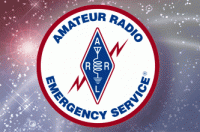How To Use Talk Groups EFFECTIVELY
As important as it is for us to implement new technologies it is equally important to remind ourselves about proper network protocol. The CORE servers allow us to better deliver talk groups, however this will be of little use if those talk groups are used inappropriately.
Talk Group Protocol
In North America our three major talk groups, Worldwide Calling, Worldwide English Calling and North America Calling have the broadest distribution. We make these talk groups available so that any DMR MARC member can contact another member anywhere around the world. The Worldwide talk group is available to all DMR MARC member c-Bridges.
REMEMBER, on North America talk group, you are keying up 300 repeaters in US and Canada.
When Out of State, use the TAC310, 311, or International UA talk groups.
North America Calling's distribution is limited to c-Bridges and repeaters on this continent. Because of the broad distribution of these three talk groups it is important that they be used appropriately. As such, I want to introduce three important concepts to consider when using them.
Calling Channels--Consider talk groups such as Worldwide Calling, Worldwide English Calling, North America Calling and even our regional talk groups as "calling channels." A calling channel is a talk group you would use to reach another DMR MARC member not available on your local network or repeater. When using these calling channels it is important to understand that they take up a great many resources across our global network. So it is important that they be used only to reach another individual and to remember that they should not be used for longer rag chews.
Minimal Use-When deciding which talk group to use, you should always use the talk group with the smallest footprint that would enable you to successfully accomplish the purpose of your transmission. For example, if you were looking to communicate with someone in Europe, the way to accomplish this would be to first use one of the global talk groups, Worldwide Calling or Worldwide English Calling. But if you were only trying to communicate with someone across the U.S. you might try North America Calling and conversely if trying to contact someone in a neighboring state or province perhaps one of our regional talk groups would be best. In the case of making a call to Europe on the Worldwide Calling channel you would potentially be using 1/2 of the amateur DMR resources around the globe. In the case of contacting someone in a neighboring state or province you would only be using the resources of the repeaters carrying that regional channel. Regardless of which talk group you end up using, limit your usage to reaching the person you need and then take the conversation to one of our "User Activated" talk groups.
User Activated--These are talk groups that are carried on repeaters but are only activated when a user wants them turned on. Some have called these talk groups "push-to-talk" or "tactical" channels but we refer to them simply by what they are, "User Activated." These are the talk groups you would use if you want to carry on a longer QSO after reaching someone via our more broadly distributed talk groups such as Worldwide Calling or North America Calling. Unlike the calling channels, User Activated talk groups only utilize the resources of the single repeater on which they've been activated. So contact your friend via one of our "calling channels" but take your QSO to one of the "User Activated" talk groups. While we encourage the use of these User Activated talk groups be mindful that they are made available to everyone and as such ask that you limit QSOs to 10 minutes. Using these talk groups appropriately ensures your conversation takes place and frees up the rest of the network so that others may have one as well.
DMR MARC User Activated Talk Groups
Beginning today (3/26/15), DMR MARC is making available and requesting that all DMR MARC member c-Bridges enable two new User Activated talk groups. They are UA English 1 and UA English 2. UA English 1 is talk group number 113 and UA English 2 is talk group number 123. As their name implies, both talk groups are English language. User Activated talk groups in other languages have also been created and will be made available as necessary. These talk groups are important tools to enable all of us to be better custodians of our global network.
Collectively we have built the world's preeminent amateur radio network. It is a network that has been built to use and enjoy. To do so we must use it appropriately, and treat each other with civility and respect. I am confident we can continue to do just that if we are mindful of the three concepts I've outlined. I believe most users want to use the network appropriately and it is incumbent upon all of us to help, not by enforcing these concepts, rather by teaching and demonstrating them in our own use.
~ DMR-MARC via K6BIV
